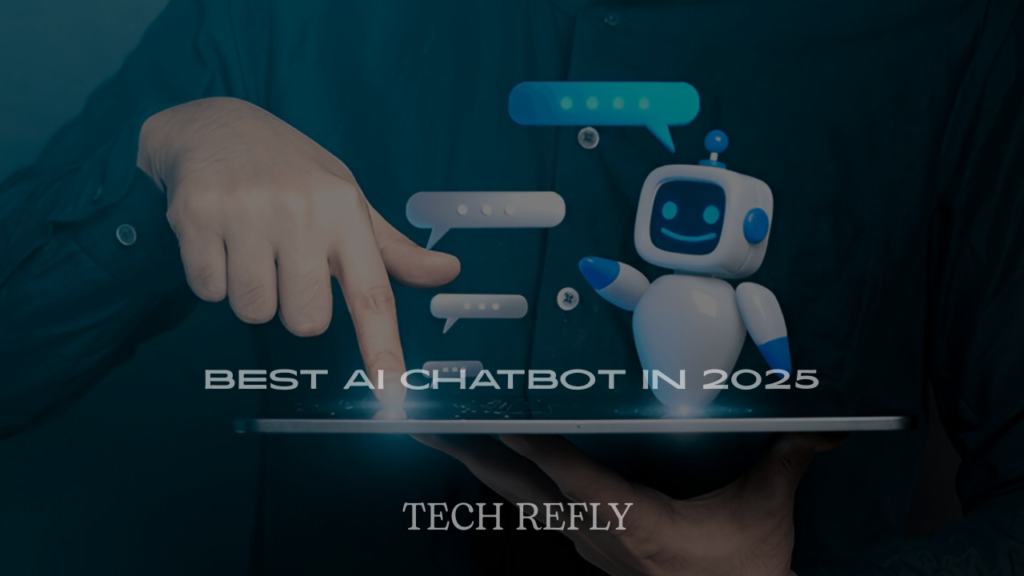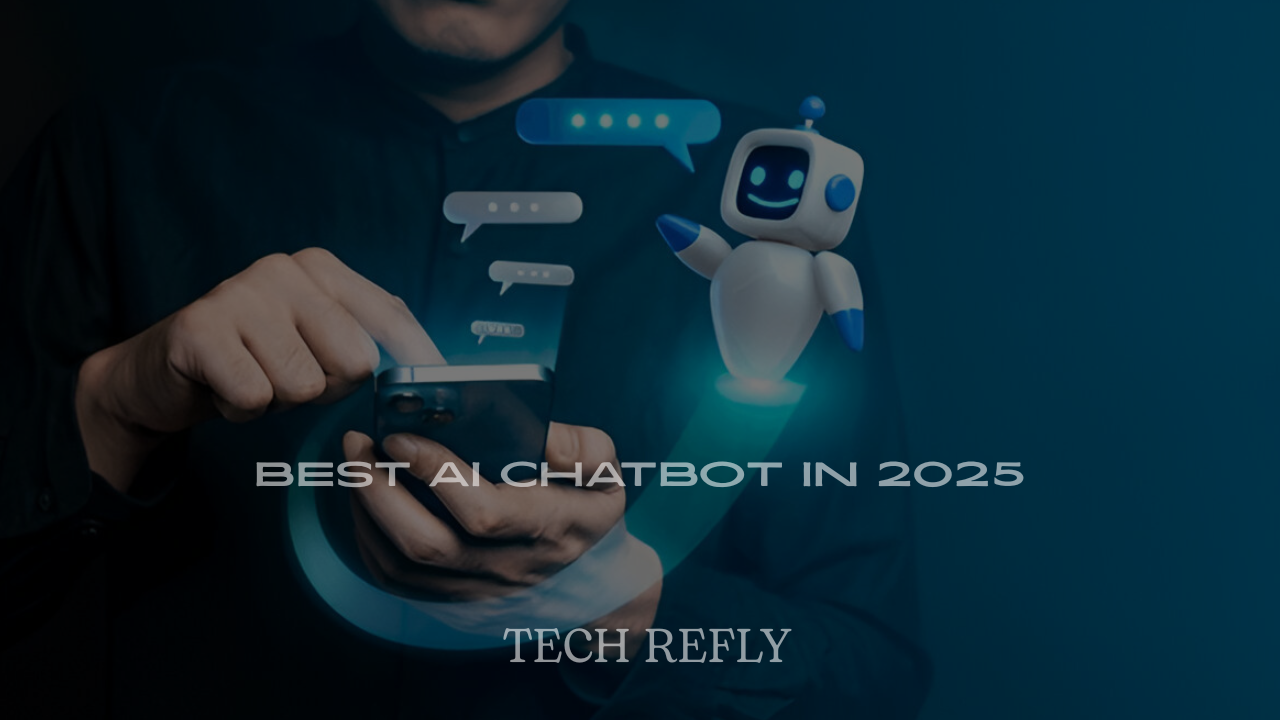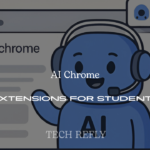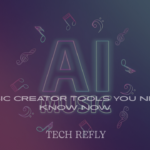In 2025, AI chatbots have moved beyond being mere customer support tools. They are now powerful digital assistants used for sales, marketing, education, personal productivity, and even coding. Whether you’re a business looking to automate tasks or an individual in search of a smart assistant, choosing the right AI chatbot can be overwhelming.

This guide compares the best AI chatbots of 2025, outlines how they work, explores their use cases, and helps you choose the right one based on your needs.
Why Are AI Chatbots So Important Today?
AI chatbots are essential because they:
- Provide instant 24/7 responses to customers.
- Cut operational costs by replacing human agents.
- Handle multiple conversations simultaneously.
- Offer personalized experiences using data and history.
- Improve conversion rates and lead generation.
- Enhance internal productivity for teams and individuals.
Top Features to Look for in an AI Chatbot
| Feature | Why It Matters |
| Natural Language Understanding (NLU) | Enables human-like conversations. |
| Integration Capabilities | Connects with CRMs, websites, Shopify, WhatsApp, etc. |
| Multilingual Support | Supports global reach. |
| AI Model Power | Determines how well the bot understands and responds. |
| Voice Input/Output | For hands-free, accessibility-based use. |
| Analytics & Reports | Measures chatbot performance. |
| Custom Training & Memory | Improves personalization and long-term interaction. |
Top 10 AI Chatbots in 2025 (Reviewed & Compared)
1. ChatGPT (OpenAI)
- Use Case: General purpose, writing, coding, learning.
- Tech: GPT-4 Turbo with memory, DALL·E, voice & image input.
- Pros: Fast, creative, supports plugins, cross-platform.
- Cons: Pro version needed for advanced features.
- Pricing: Free & Pro ($20/month).
2. Google Bard (Gemini)
- Use Case: Research, productivity, integration with Google apps.
- Tech: Gemini AI model.
- Pros: Up-to-date answers, native Gmail/Docs integration.
- Cons: Still improving in creative generation.
3. Microsoft Copilot
- Use Case: Office productivity, document summarization.
- Tech: GPT-4 embedded in Word, Excel, etc.
- Pros: Saves time on repetitive tasks.
- Cons: Tied to Microsoft ecosystem.
4. Claude AI (Anthropic)
- Use Case: Long-form writing, safe and ethical AI use.
- Pros: Massive memory window (up to 200K tokens).
- Cons: Limited 3rd party integrations.
- Pricing: Free & paid tiers.
5. Jasper Chat
- Use Case: Marketing content, SEO, social media.
- Pros: Built for copywriters, 50+ templates.
- Cons: Costly for individuals.
- Pricing: Starts at $39/month.
6. Tidio Lyro
- Use Case: Ecommerce customer support.
- Pros: Shopify/WooCommerce integration, real-time chat.
- Cons: Limited content capabilities.
- Pricing: Free tier available, paid starts at $29/month.
7. Intercom Fin
- Use Case: SaaS onboarding and customer knowledge base.
- Pros: Context-aware, live agent handoff.
- Cons: Intercom account required.
8. Drift
- Use Case: B2B lead qualification, enterprise sales.
- Pros: ABM targeting, chatbot + live chat hybrid.
- Cons: Expensive for SMBs.
9. YouChat
- Use Case: Students and researchers.
- Pros: Search engine built-in, answers with citations.
- Cons: Less creative, lacks deep personalization.
10. Poe by Quora
- Use Case: Multi-AI platform with Claude, GPT, Gemini.
- Pros: One platform, many bots.
- Cons: Some models behind paywall.
Most Common Use Cases for AI Chatbots
Business Use Cases:
- Automate customer support with 90% fewer tickets.
- Generate leads via chatbot forms and quizzes.
- Handle appointment booking, product suggestions, and follow-ups.
- Provide multilingual support for international users.
- Build internal employee help desks for HR or IT.
Personal Use Cases:
- Writing assistant for blogs, essays, and emails.
- Daily reminder setting and task management.
- Learn languages, math, history, and more.
- Chatbots for mental health and therapy (e.g., Woebot).
How to Choose the Right AI Chatbot for Your Needs
| Question | Best Option |
| Need help with creative writing & code? | ChatGPT |
| Want to automate ecommerce support? | Tidio, Intercom |
| Want integration with Microsoft tools? | Copilot |
| Need an all-in-one marketing tool? | Jasper Chat |
| Looking for long-term chat memory & ethics? | Claude AI |
Future of AI Chatbots: What’s Next?
- Voice + Vision Integration: Bots will talk and see.
- Emotionally aware chatbots: Recognizing tone, emotion.
- Hyper-personalized bots: Memory, history, preferences.
- Offline AI assistants: Working without internet.
- AR + VR chatbots: Integrated into virtual environments.
Comparison Table: Best AI Chatbots of 2025
| Name | Best For | Free Plan | Key Feature |
| ChatGPT | Writing, coding | ✅ | Memory, Plugins |
| Google Bard | Research, productivity | ✅ | Google apps integration |
| Jasper Chat | Marketing | ❌ | SEO & content templates |
| Tidio Lyro | Ecommerce support | ✅ | Live chat + AI |
| Claude AI | Long-form, secure AI | ✅ | 100K+ token context |
FAQs
Q1: Which is the most advanced AI chatbot in 2025?
ChatGPT (Pro) is the most advanced with voice, image, plugin, and memory support. Claude AI is also highly advanced with long memory context.
Q2: Are AI chatbots secure for business use?
Yes, especially platforms like Intercom, Claude, and Copilot focus heavily on compliance and user data security.
Q3: Can AI chatbots replace human employees?
Not completely. Chatbots can handle repetitive queries and tasks, but human empathy and complex decisions still need people.
Q4: Which AI chatbot is best for personal use?
ChatGPT (free or Pro) and Google Bard are best for personal assistants, learning, and creative writing.
Q5: Can I train a chatbot on my data?
Yes, tools like ChatGPT Enterprise, Jasper Business, and custom GPTs allow training on your own PDFs, website, or documents.
Q6: What is the best free AI chatbot?
ChatGPT Free and Google Bard offer the most value in the free category with robust performance.
Conclusion
Choosing the best AI chatbot in 2025 depends on your goals — whether you’re streamlining customer support, enhancing team productivity, or building a personal assistant. Tools like ChatGPT, Bard, and Jasper are leading the space, and the integration of memory, voice, and vision is making them more powerful than ever.
Investing in a chatbot today is investing in tomorrow’s productivity.










